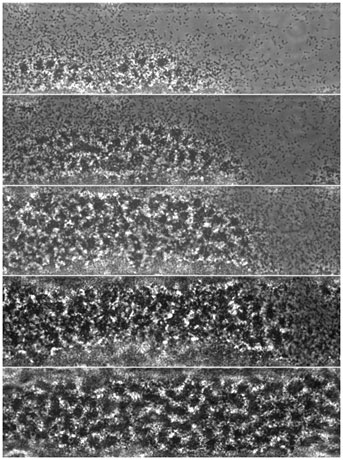Investigating the development and treatment of plant diseases caused by the bacterium Xylella fastidiosa using theoretical and experimental methods
The goal of this project is to understand the progression and treatment of xylem fouling by bacterial biofilms formed by the plant pathogen Xylella fastidiosa (Xf) using tightly coupled theoretical and experimental techniques. The particular objectives are to determine whether the dominant symptoms of the plant infection, such as leaf scorch, are due to reduced water flux caused by occlusion of the water transport network by the biofilm or whether active plant responses are also implicated. Further, the investigation will focus on non-destructive methods of treatment of the disease. These two objectives will provide fundamental insight into the disease process and treatment.
The collaboration between the theoretical (mathematics) and experimental (biological) methods will validate the mathematical theory and suggest new avenues of disease treatment. The project will initially use experimental data to validate the theoretical modeling. In turn, the modeling and analysis will be used to test various hypotheses on the disease development (e.g. occlusion versus plant responses) that are difficult to test in the laboratory. In addition, the theoretical predictions will point to particular experimental designs (e.g. treatment regimes) that may provide valuable insight into non-destructive disease treatment.
Project Funded By:
- National Science Foundation, Department of Mathematical Sciences

Biofilm formation by Xylella fastidiosa inside microfluidic chambers. Pictures were taken at later time points from top to bottom. This process will be modeled mathematically during this inter-disciplinary research.



